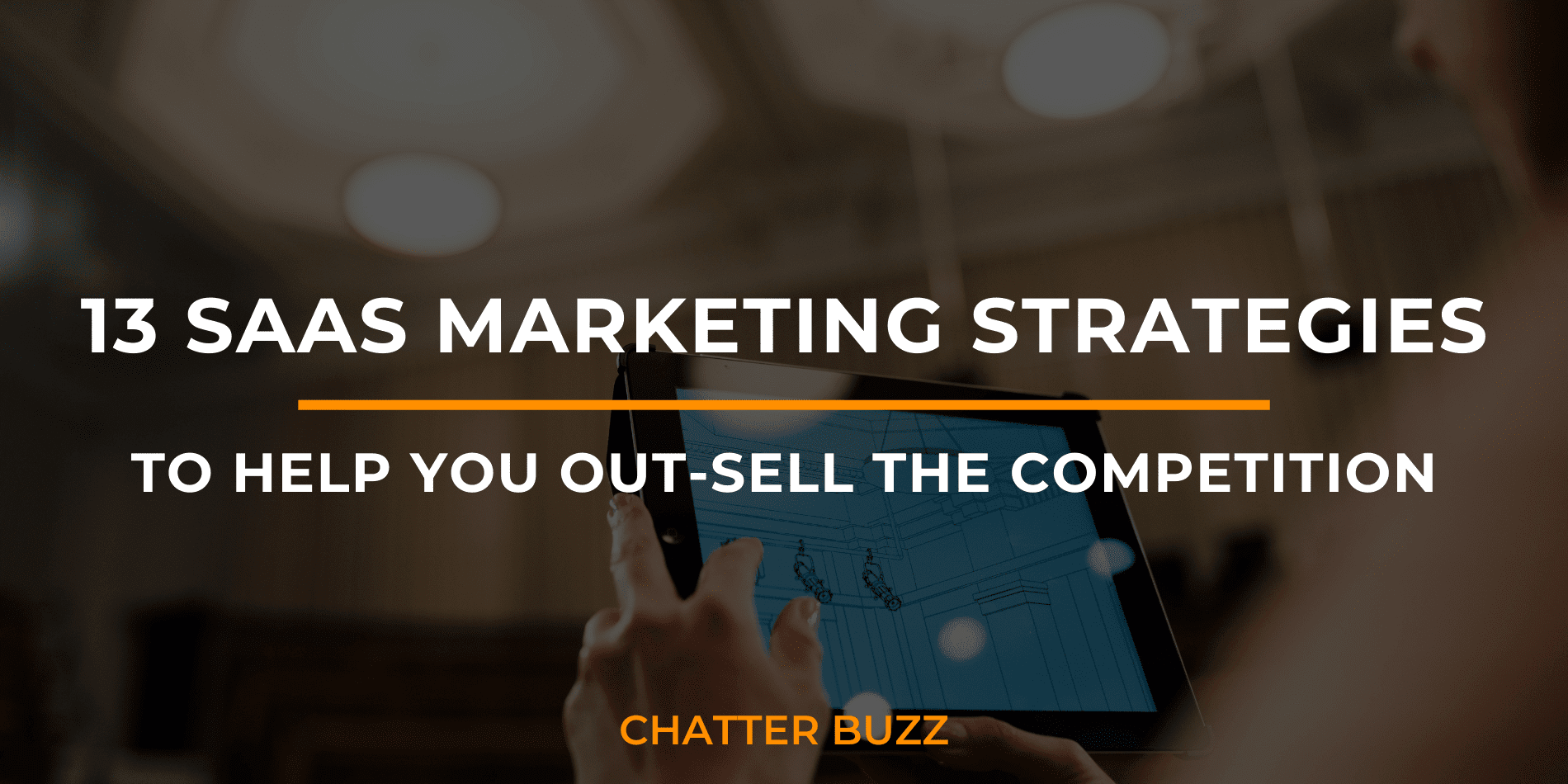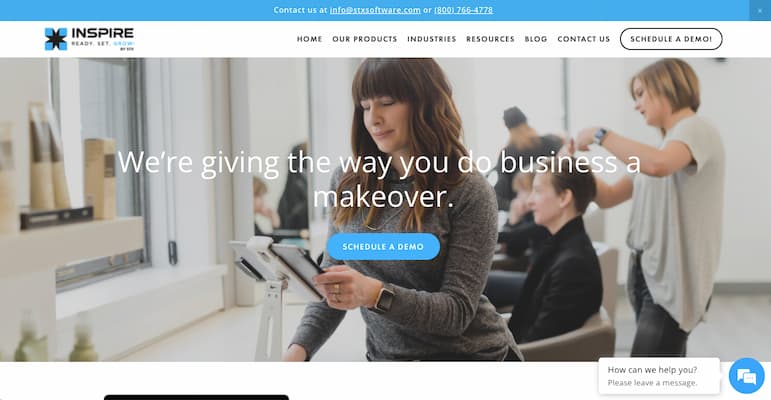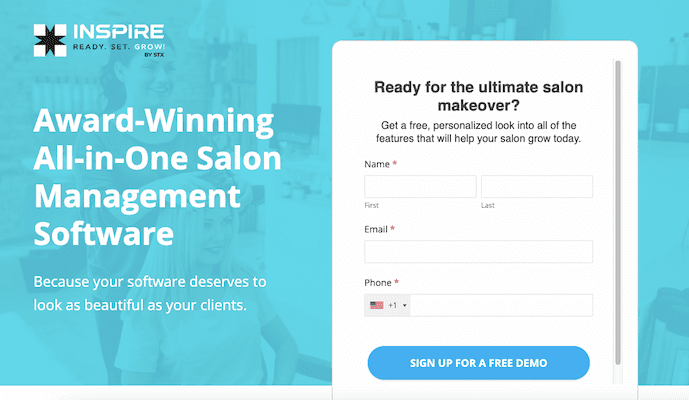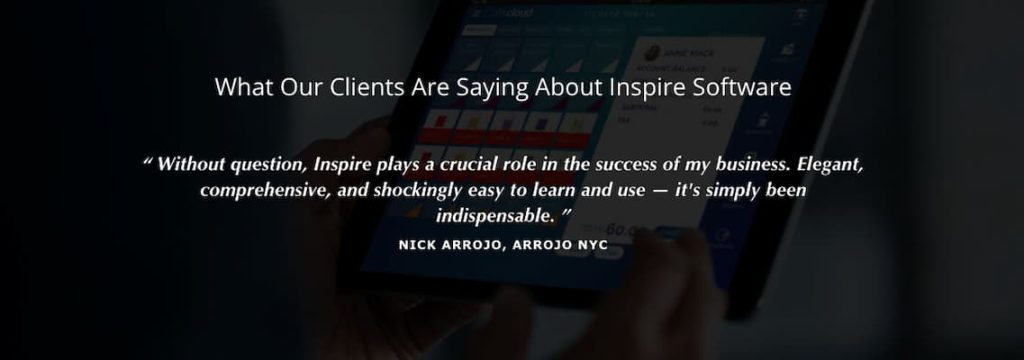13 SaaS Marketing Strategies to Help You Out-Sell the Competition

As the SaaS market continues to rapidly grow, you may be finding your business slipping behind your competition.
You have read every marketing “how-to” blog out there, but none of it seems to be doing the trick.
This is because those blogs are geared to B2C businesses that sell everyday products. SaaS businesses are very different, so your SaaS marketing strategies should be too.
Don’t worry though, that is exactly what we are here for.
In this article, I will explain how SaaS marketing is different and give you 13 marketing strategies you can implement to out-sell your competition.
Let’s get started!
What is Saas Marketing, and How is it Different?
SaaS, or software as a service, is when a business sells an intangible product such as cloud-based software.

What makes SaaS marketing different from regular marketing?
First off, as we just mentioned, you are not selling a tangible product that you can show in your marketing. Additionally, your customer is often another business and not a consumer.
Why does that matter?
The decision-maker for B2B buying has a completely different buying process than the average consumer. Additionally, they have unique pain points and value different things.
So how should you market your SaaS? Keep reading to find out.
13 SaaS Marketing Strategies Your Business Needs
Here are some of the top SaaS marketing strategies that we use for our clients to help them reach their target audience and out-sell their competitors.
1. Market Research
Before you begin planning your SaaS marketing strategy, it is important to determine where you stand in the market. This can help you determine your value proposition and key differentiators which you can later promote in your marketing.
You can make decisions for your strategy by looking at your competitors.
Things to consider are:
- Keywords
- Marketing channels
- Targeted segments
- Content
There are several tools you can use to make your research easier and more efficient. Some of which include:
Now that you know where you stand in the market, it is time to figure out who your target audience is going to be.
2. Know Your Audience
Sending out generalized ads will not bring you qualified leads. It is important to determine who your current audience is and who your target audience is. Then, look at your current customer data and do research into their demographics and behaviors.
Then, create buyer personas that dig deeper into who your audience is. Things to note are:
- Pain points
- Needs
- Wants
- Goals
- Behaviors
An important thing to note is whether you are selling business-to-business (B2B) or business-to-consumer (B2C) software. This is because each consumes content differently, has unique buying behaviors, and values different things.
3. Perform an Audit
Don’t know where to start in your strategic planning? Here’s a trick: perform a marketing audit. This will show you what you are doing that is succeeding and what is failing. From there, you can begin to make decisions on what to continue doing and where you need to switch things up.
There are several types of audits you can perform. You can conduct a complete marketing audit that encompasses all marketing that you do. Additionally, you can break it up and do a digital marketing audit, content audit, website audit, or SEO audit.
SWOT Analysis

When performing your audit, we recommend doing a SWOT analysis. This is where you determine what your strengths and weaknesses are. Then you can access any opportunities or threats for your marketing.
4. PPC
Your PPC campaign can help you put your message in front of the right people at the right time. By creating a keyword strategy, you can figure out what your customers are searching for on Google and make sure your ads are coming up.
But how can you be sure your PPC ads will get your target audience’s attention?
A/B testing of course!
Create several variations of your ads with either different copies, CTAs, or designs. Then you can run a test to see which ones get more conversions, clicks, views, or whichever key performance indicator (KPI) you choose.
5. Content Marketing
Content marketing is a great strategy for driving leads.
But there’s a catch.
No matter how creative your content is, no one will see it if you are not implementing SEO. You need to include relevant keywords in your content to make sure it is showing up in front of the right people.
Landing Page
A well-built landing page is crucial to lead generation and high conversion rates.
Let’s dig a little deeper into what a well-built landing page is.

First off, we recommend your landing page not have anything that can distract your audience from the action you are trying to get them to take. Whether this is making a purchase or just filling out a form.
For example, we often leave off the navigation bar so they don’t end up leaving the page.
Then, your copy and the call to action (CTA) should be clear and simple. The copy should reinforce to the audience what problem you are solving and why they should take the action.
An example of a clear call to action is: “Fill out the form to schedule a free consultation.”
Update Blog Strategy
Blogs are something many companies do… but don’t do well. You start a blog and post articles every week, but soon, every week turns into every month. Then you find yourself not posting at all.
On the other end, you may be posting every week but your content has no purpose.
What do I mean by purpose?
Every piece of content you put out should have a strategy. This can be to make yourself a thought leader, bring traffic to your site, or drive your reader to make a purchase.
6. SEO
Search Engine Optimization (SEO) is one of the most cost-effective tools to generate leads and conversions. This is because it is generating organic traffic rather than paid traffic.
Within SEO, there are multiple categories you need to understand, so let’s dive in.
On-page SEO
Doing on-page optimizations can help your website rank higher on search engines. This makes you more visible to your target audience.
So what is on-page optimization?
One thing you can do to optimize your site for search engines is adding keywords throughout your web pages’ copy. Make sure that the keywords you select are relevant to the page and do not have high competition.
Local SEO
While you may already have a national SEO campaign implemented, local SEO efforts can allow you to target specific geographic markets.
Why is this helpful? When you use local keywords, your competition is a lot lower, so you can rank higher.
This is especially relevant if your business only works in a specific location.
Technical SEO
Simply put, technical SEO is focused on making sure the search engine robots understand your website so that they rank it higher.
Some factors that you can optimize for technical SEO are your site’s speed, the content and site structure, schema markup, as well as visual elements.
7. Native Advertising
Here’s a secret most marketers probably don’t want you to know: People hate advertisements. In fact, many go out of their way to avoid seeing ads. They will even pay extra money to not get commercials while watching tv on streaming devices.
The solution? Native advertising.
Native advertising is paid ads that look like regular content. It is often designed to blend in with the rest of the viewers’ web page.

8. Social Media Marketing
Before you get ahead of yourself by coming up with TikTok videos, ask yourself, “Is this social media platform right for my business?”
It’s okay if the answer is no. Despite popular opinion, you don’t have to be on every social media platform out there. What is important is that you are on the platforms that your audience is on.
When it comes to SaaS, especially B2B, your customer will likely be on LinkedIn, Facebook, Twitter, and Instagram. If you do not have a large marketing team, we recommend starting on one or two platforms that your audience engages on the most.
Stumped on what social media content to create? Check out our blog 6 Quick Content Recipes You Need to Bake Up And Feed Your Brand.
9. Free Trials
Implementing free trials is a great strategy for customer acquisition. This allows your customer to see first-hand how amazing your software really is!
More importantly, gives potential customers a low-risk opportunity to try out your software. Once they’ve experienced the benefits of your software they will be more likely to convert to a paying customer.
Here’s a trick: Have them fill out some of their information in order to get the free trial. This way you can retarget them through email marketing.
Speaking of free, this brings me to our next strategy.
10. Freemium
You’ve heard of premium plans but have you tried freemium?
Freemium is becoming a growing trend amongst SaaS businesses.
So what is it?
Freemium plans are when you provide your software for free with limited features. This is a product-led strategy because you are letting the product speak for itself and bring in leads.
The idea is to give them just enough features to see the true benefit of your software without giving them everything. For example, you can give a cap for how many times they can use a specific feature a month.
Then once they see how useful your software is and how much easier their life can be if they had unlimited access, they’ll upgrade to a paid plan.
11. Deals
Here’s a great psychological tick: comparative pricing.
This is when you have multiple plans at different prices listed next to each other. We usually recommend three. One that is more expensive with more features, one that is less expensive with fewer features, and one right in the middle.
Compared to the expensive plan, the middle one seems like a great deal! It has more features than the cheap one but the price is a lot more appealing than the expensive one.
In fact, someone who may have been quick to pick the cheap option may now be tempted to get the middle one because they think they are getting a great deal.
12. Reviews
Word-of-mouth is one of the strongest marketing tools you can leverage. In fact, 88% of consumers say they look for word-of-mouth assurance before making a purchase.

Not only do reviews reassure potential customers but they can also help boost your SEO, especially if you use Google My Business.
After a purchase is made, send the customer an email asking them to leave a review. You can even entice them with a discount for future purchases.
The best part is you can then incorporate these reviews into your content marketing by posting them on social media, putting them in videos, or using them in your emails.
Speaking of word-of-mouth, let’s talk about another great strategy, referral programs.
13. Referral Program
What are referral programs?
This is a system you set up to reward customers for referring you to a friend. Unlike reviews, referrals make the customer do the leg work of convincing a friend to work with you.
The secret to the perfect referral program? Having enticing rewards for both the old customer and the new.
For example, you can say that if they refer a friend, their next order will be 50% off, and the friend can get a $20 discount on their first purchase. By doing this, both parties are enticed to make a purchase.
According to ThinkImpact, 78% of B2B referrals create viable customer leads. They also noted that 91% of customers share good deals with friends, so clearly, rewards are a great motivator.
Don’t have the time or the manpower to implement these SaaS marketing strategies? We’ve got you!
Out-Sell Your SaaS Competitors with Chatter Buzz
We understand that coming up with a new strategy can be stressful. Veering away from what you know and have been doing for years is daunting. But just like buying behaviors change over the years, so too should your SaaS marketing.
Whether you need someone to help come up with a top-notch strategy or just assistance in implementing your current strategy, we can help!
Our SaaS marketing experts have years of experience growing SaaS businesses. From content creation to SEO optimization, we can help you attract more leads and make more sales.
Have another SaaS marketing strategy you like to use? Let us know in the comments below!








